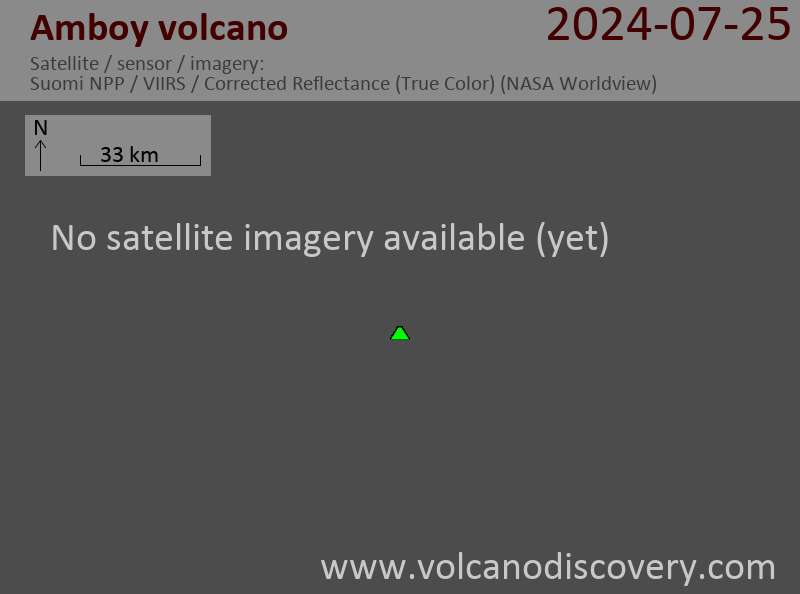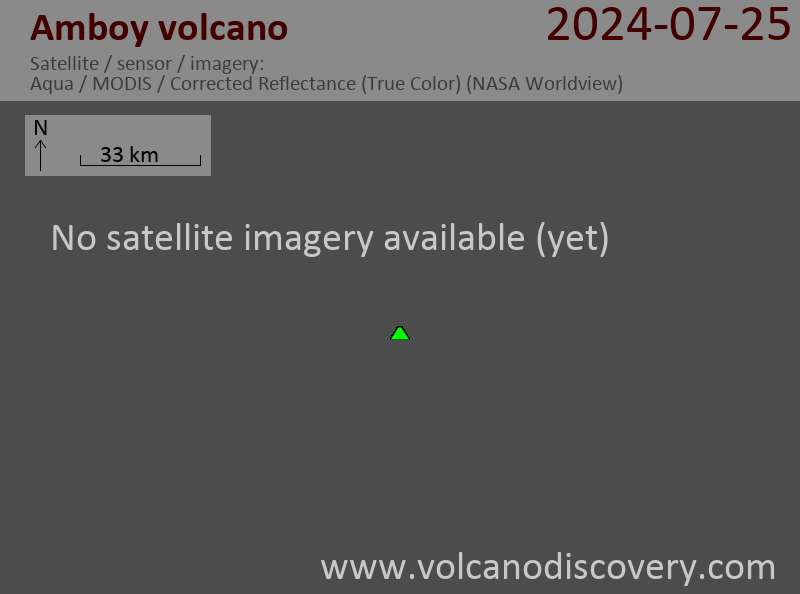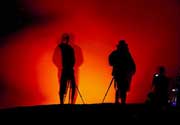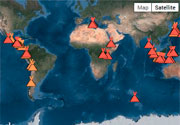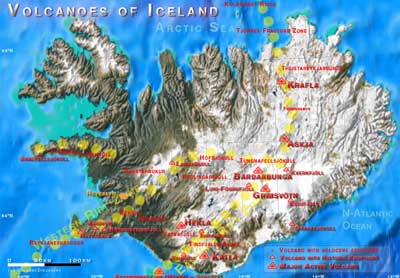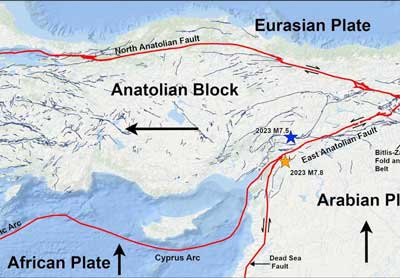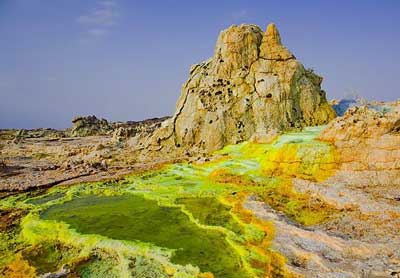Amboy Volcano
Updated: May 1, 2025 18:09 GMT -
volcanic field & cinder cones
California (Canada and USA (mainland)), 34.55°N / -115.78°W 
Summit height: 288 m / 945 ft
Current status: normal or dormant (1 out of 5)
The Amboy volcanic field covers an area of 70 km2 between Bagdad Dry Lake to the west and Bristol Dry Lake to the east in the Mojave Desert, California. It contains mainly pahoehoe lava flows. Amboy crater proper is a prominant cinder cone in the NE of the lava field.
[smaller] [larger]
Amboy volcano eruptions: about 6000 years ago
Latest nearby earthquakes
| Date and Time | Mag / Depth | Distance / Location | |||
|---|---|---|---|---|---|
Background
The Amboy lava field covers approximately 70 square kilometers and consists primarily of vesicular pahoehoe. The field is in an alluvial-filled valley between the Bullion Mountains to the southwest and the Bristol Mountains to the northeast. Within the valley, it lies between Bagdad Dry Lake to the west and Bristol Dry Lake to the east; both are playa lakes typical of the Mojave Desert.Amboy Crater is a prominent, undissected cinder cone in the northeastern quadrant of the lava field. The volcano erupted along the northern border of Bristol Dry Lake and poured lava onto its surface, dividing it into the two present playas. The cone rises 75 meters above the surrounding lava flows and is approximately 460 meters in basal diameter. It is composed of a loose accumulation of volcanic ejecta with secondary amounts of agglutinated scoriaceous tephra plus ropy, ribbon- and almond-shaped bombs. Some lithic non-vesicular accessory basaltic ejecta are present, but included xenolithic fragments are absent.
Amboy Crater is not a single cone but is composed of at least four nearby coaxial nested cones. The outher slopes of the main cone are gullied by erosion. Within the main outer cone, there is a remnant of a second cone on the west side; both cones are breached on the west. In addition to the two main cones, there are two relatively undisturbed cone walls within the main crater. These innermost cones are composed almost entirely of angular scoriaceous cinders.
Most of the Amboy lava field is composed of undifferentiated flow units of relatively dense, "degassed" pahoehoe lavas that form a hummocky terrain. The surface relief on this unit ranges from 2 to 5 meters. The flow is characterized by abundant tumuli and pressure ridges and, as is typical for this type of flow, a fractured surface. Lava tubes are not present in any of the flows, nor are blisters or shelly-type pahoehoe; only a few lava channels are present. Low-lying areas on the flow are filled with windblown sediments which range from a few centimeters to more than 1 meter thick. The thickness of aeolian deposits increases towards the southwest part of the field. Sand-blasting is prevalent over the entire flow, and wind-faceted pebbles of basalt are common.
The oldest flows occur in the eastern and southeastern part of the field. They are characterized by numerous collapse depressions up to about 10 meters in diameter and several meters deep. Although the name would imply that "collapse" depressions formed by the collapse of a crust over fluid lava, at least some depressions may form as a result of inflation of an emplaced, but still plastic, crust by molten lava around a general void in the flow.
---
From: Wood and Kienle, 1990, Volcanoes of North America: United States and Canada: Cambridge University Press, 354p., p.243-245, cited on the website of USGS Amboy volcano information.
Latest satellite images
Amboy Volcano Maps
Below is a selection of maps showing the location and surroundings of the volcano at various resolutions based on aerial-imagery / terrain maps. Feel free to use them for non-commercial purposes on your blog or website as long as you credit them with a link back to this page (click to copy it).

Satellite/aerial-type map of Amboy volcano (world scale)

Terrain-type map of Amboy volcano (world scale)

Satellite/aerial-type map of Amboy volcano (region scale large)

Terrain-type map of Amboy volcano (region scale large)

Satellite/aerial-type map of Amboy volcano (region scale medium)

Terrain-type map of Amboy volcano (region scale medium)

Satellite/aerial-type map of Amboy volcano (region scale small)

Terrain-type map of Amboy volcano (region scale small)

Satellite/aerial-type map of Amboy volcano (local scale large)

Terrain-type map of Amboy volcano (local scale large)

Satellite/aerial-type map of Amboy volcano (local scale medium)

Terrain-type map of Amboy volcano (local scale medium)

Satellite/aerial-type map of Amboy volcano (local scale small)

Terrain-type map of Amboy volcano (local scale small)

Satellite/aerial-type map of Amboy volcano (scale of 10s of km)

Terrain-type map of Amboy volcano (scale of 10s of km)

Satellite/aerial-type map of Amboy volcano (scale of 20-40 km)

Terrain-type map of Amboy volcano (scale of 20-40 km)

Satellite/aerial-type map of Amboy volcano (scale of approx. 10-20 km)

Terrain-type map of Amboy volcano (scale of approx. 10-20 km)

Satellite/aerial-type map of Amboy volcano (scale of 5-10 km)

Satellite/aerial-type map of Amboy volcano (scale of few kilometers)




